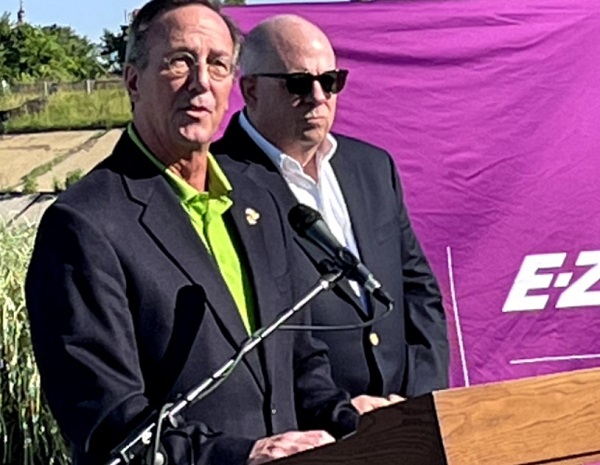ANNAPOLIS, MD—Governor Larry Hogan on Friday announced the next step in the strategy to address congestion and future traffic demand crossing the Chesapeake Bay. The launch of the Bay Crossing Study Tier 2 National Environmental Policy Act (NEPA) follows completion of the Tier 1 NEPA in April, and continues the governor’s unprecedented efforts to provide congestion relief for generations to come at the Bay Bridge, and along its 22 miles of approach highways.
“At my direction, we are immediately launching a critical $28 million Bay Crossing Tier 2 Study, which will not only study the new crossing, but also look at solutions for the entire 22-mile corridor from the Severn River Bridge to the 50/301 split,” said Governor Hogan. “This is the critical next step which is needed in order to move forward so we can make a new Bay crossing a reality in the years to come, and it is just one more way that together we are truly changing Maryland for the better.”
The Maryland Transportation Authority (MDTA) and the Federal Highway Administration (FHWA) are following the tiered NEPA process to study potential improvements. This process applies to all projects receiving federal funding or approval.
In April, the combined Final Environmental Impact Statement (FEIS) and a Record of Decision (ROD) for the Bay Crossing Study Tier 1 NEPA was approved by FHWA, identifying Corridor 7, the corridor containing the existing Bay Bridge, as the Selected Corridor Alternative. The FEIS/ROD is available for review at baycrossingstudy.com.
“The $28 million Tier 2 study will build upon the Tier 1 findings and identify specific alignment alternatives within Corridor 7, which is two miles wide and 22 miles long, from the Severn River Bridge in Anne Arundel County to the US 50/US 301 split in Queen Anne’s County,” said MDTA chairman and Maryland Transportation Secretary James F. Ports, Jr. “The Tier 2 study will identify and evaluate a No-Build Alternative as well as various crossing alignments and types—such as a new bridge, a bridge/tunnel or replacement of existing spans. We’re eager to engage with residents, communities, officials, stakeholders and other members of the public on the Tier 2 Study. As we learned from the Tier 1 Study, the public’s contributions in this process are invaluable.”
At its June 23 meeting, the MDTA Board is expected to vote on the agency’s draft Consolidated Transportation Program, which includes funding for the Tier 2 NEPA. The study would take about four to five years to complete. If a build alignment alternative is selected, another Record of Decision for Tier 2 would be required before proceeding to final design, right-of-way acquisition, and construction. A No-Build Alternative means that no action of any kind would be taken.
“Today’s announcement marks a major milestone for Maryland that advances a path forward for congestion relief at the Bay Bridge and for local communities in Anne Arundel and Queen Anne’s counties,” said MDTA Executive Director William Pines.
Modal and operational alternatives (MOA), including ferry service, rail, bus, and transportation system management/transportation demand management were evaluated as part of Tier 1 and were found to not meet the Tier 1 purpose and need as stand-alone options. The Tier 2 study will analyze buses, ferries, and transportation system and demand management, as well as how they may be used in conjunction with other alternatives.
Additional information and public participation opportunities for the Tier 2 NEPA Study will be posted to baycrossingstudy.com.
Do you value local journalism? Support NottinghamMD.com today.

